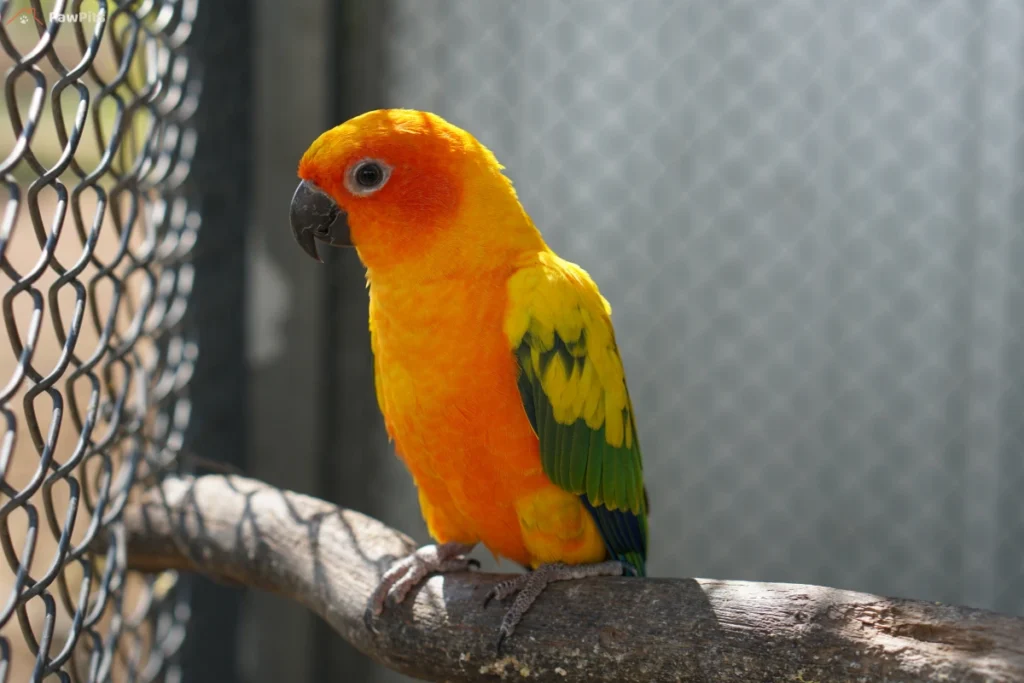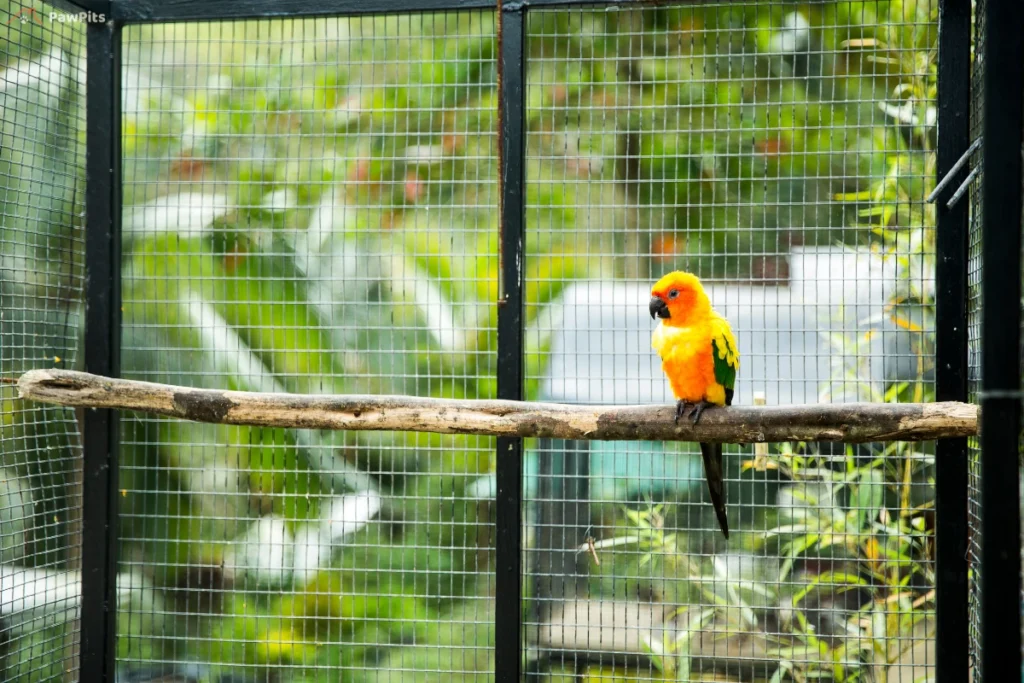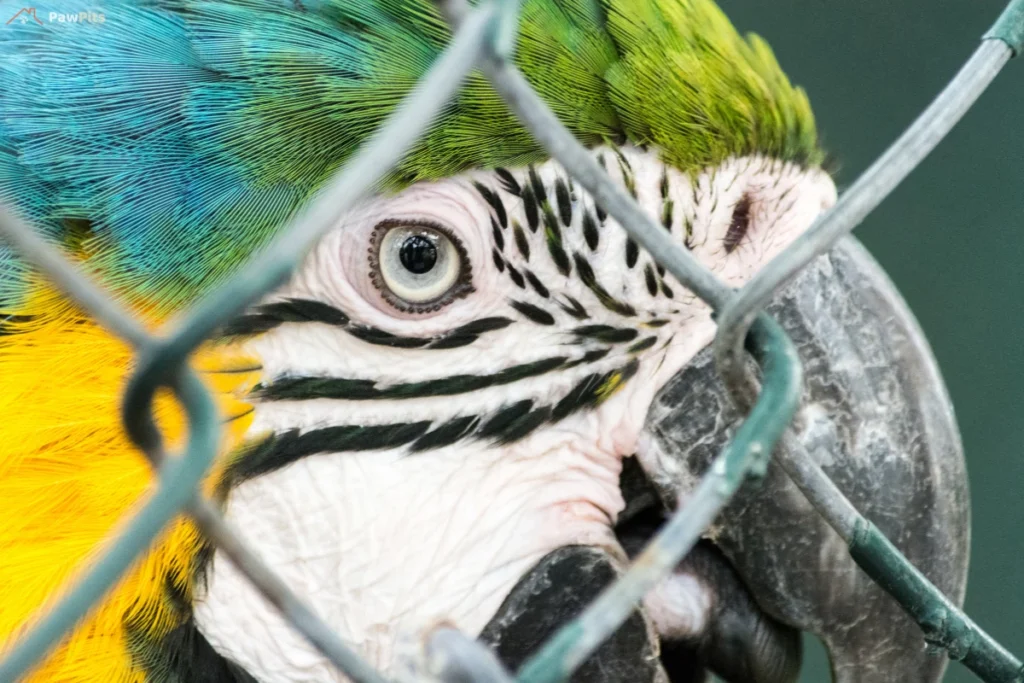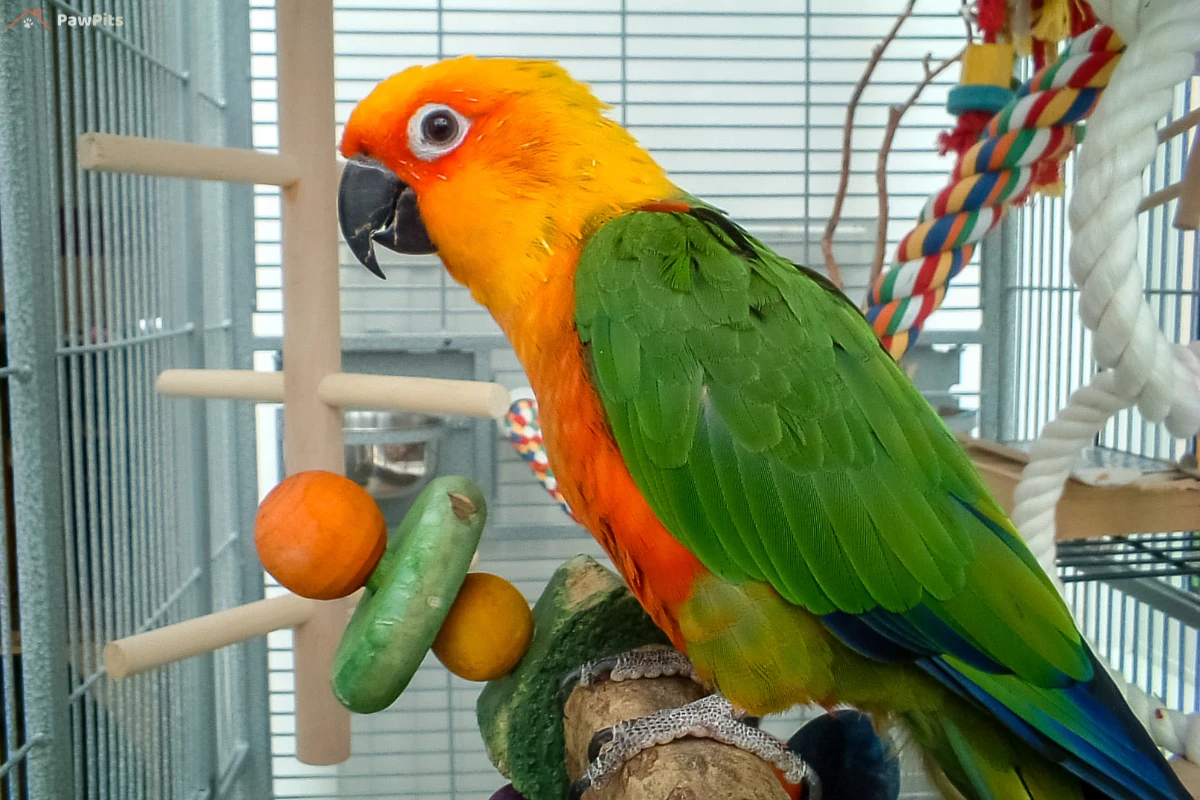Parrot cage selection plays a crucial role in ensuring your feathered companion’s happiness and well-being. A well-designed cage provides not just a place to live but a secure and comfortable environment that promotes physical health and mental stimulation. Parrots thrive in spaces that offer freedom of movement, interactive accessories, and safety features tailored to their needs. Choosing the right cage requires careful attention to size, materials, and functionality, as these factors directly impact your bird’s daily life. By focusing on these elements, you can create a stress-free and enriching habitat for your parrot to flourish.
1. What Makes a Parrot Cage Stress-Free?

When selecting a parrot cage, focusing on key features ensures a stress-free and comfortable environment for your bird. Each aspect of the cage contributes to its overall suitability, helping your parrot feel secure and content.
One of the most important factors to consider is adequate space for your parrot’s size. Parrots are highly active and curious creatures, requiring enough room to move freely, stretch their wings, and explore. A cage that is too small can lead to frustration, stress, and even health issues over time. To prevent this, always choose a cage that provides ample room based on your parrot’s specific species and activity levels. Larger birds, such as Macaws and African Greys, need expansive cages, while smaller species like Budgies or Lovebirds thrive in more compact but spacious designs.
Proper bar spacing to prevent injury
Another critical feature to prioritize is proper bar spacing to prevent injury. The gaps between the bars should be appropriate for your parrot’s size. For smaller birds, bars that are too widely spaced may pose a risk of escape or entanglement, while for larger birds, bars that are too close together might restrict movement or encourage chewing. Carefully measuring the spacing ensures your bird can interact with its environment without any unnecessary risks.
Equally important is selecting non-toxic, durable materials for the cage. Parrots are known for their habit of chewing, so the materials must be safe if ingested. Stainless steel is one of the best options, as it is both non-toxic and resistant to rust or wear. Powder-coated metal cages can also be a good alternative, but ensure the coating is free from harmful chemicals like zinc or lead. A sturdy, long-lasting cage not only provides safety but also reduces the need for frequent replacements, making it a smart investment for your parrot’s well-being.
By keeping these key features in mind, you can ensure that the cage you choose fosters a stress-free and happy life for your bird. The right cage is more than just a home it’s a space where your parrot can thrive physically and emotionally.
Easy Cleaning and Proper Ventilation
Maintaining a clean and well-ventilated cage is vital for your parrot’s health and overall comfort. A cage that is easy to clean helps reduce the buildup of bacteria, dust, and waste, which can lead to illness or discomfort. Look for cages with removable trays and grates that simplify daily cleaning tasks. Smooth surfaces and materials like stainless steel make wiping down the cage quicker and more efficient.
Proper ventilation is another critical feature to consider. Parrots are highly sensitive to their environment, and poor airflow can lead to respiratory issues or an accumulation of unpleasant odors. A cage with open bars and a well-structured design ensures that fresh air circulates freely. Avoid placing the cage in a spot with poor air quality, as this can negate the benefits of good ventilation.
Recommended Toys for Enrichment
Foraging Toys
Parrots enjoy mentally stimulating activities, and foraging toys are an excellent way to engage their natural instincts. Coconut shells filled with treats or hidden food puzzles encourage your birds to work for their rewards, keeping them entertained and active.
Swings and Ropes
Swings and ropes provide both exercise and entertainment. They mimic natural elements found in the wild and give your parrot a chance to climb, sway, and explore. Be sure to choose bird-safe ropes to avoid fraying or accidental injuries.
Wooden Chew Toys
Wooden chew toys are perfect for maintaining beak health while keeping your bird busy. These toys allow your parrot to satisfy their chewing instincts safely. Opt for untreated, natural wood to ensure there are no harmful chemicals.
Incorporating these toys into your parrot’s cage helps promote mental stimulation and physical activity, creating a more enriching environment. Proper cleaning, ventilation, and a variety of engaging toys work together to ensure your parrot lives a stress-free and happy life.
2. Top Parrot Cage for Large Birds
Cages Suitable for Larger Species
Larger parrot species, such as Macaws, African Greys, and Cockatoos, require cages designed to accommodate their size, strength, and activity levels. These birds need spacious cages that allow them to move freely, stretch their wings, and engage in natural behaviors. A cage for larger parrots should have a wide and tall structure with enough room for perches, toys, and food bowls without feeling cramped.
Look for cages with features like double doors or wide openings that make it easier to handle larger birds during feeding or cleaning. Additionally, consider models with a play top or extra perching areas outside the cage, as these offer an extended space for your parrot to explore and interact. Ensuring enough interior space is crucial to keep larger parrots happy and stress-free.
Bar Thickness and Its Importance for Bigger Birds
For larger parrots, bar thickness plays a significant role in cage selection. Bigger birds have powerful beaks that can bend or break thin bars, posing a safety risk and leading to potential escapes. Cages designed for larger species typically have thicker bars, providing the durability and security needed to withstand strong beaks and playful chewing.
Thicker bars also contribute to the overall stability of the cage, ensuring it remains sturdy even if the parrot climbs, swings, or pulls on them. When choosing a cage, verify that the bar thickness is appropriate for your bird’s strength. For most larger parrots, bars should be at least 4 to 5 millimeters thick to provide the required strength and resistance.
By choosing a spacious cage with durable, thick bars, you can create a secure and comfortable environment tailored to the needs of larger parrot species. These features, combined with appropriate enrichment, ensure your bird remains both safe and engaged.
Recommended Toys for Large Birds
Providing the right toys is essential for keeping larger parrot species entertained and mentally stimulated. These birds are highly intelligent and require engaging activities to prevent boredom and stress. Below are some ideal toys for large birds:
Hanging Puzzle Toys
Hanging puzzle toys challenge a parrot’s problem-solving abilities and encourage foraging behaviors. These toys often involve compartments or slots where treats can be hidden, motivating the bird to figure out how to access the reward. Puzzle toys are especially beneficial for larger parrots, as they keep their minds active and help curb destructive tendencies.
Climbing Nets or Ladders
Larger parrots enjoy physical activities, and climbing nets or ladders provide an excellent opportunity for exercise. These toys mimic the climbing and exploring behaviors they would engage in within their natural habitats. Ensure the materials used are bird-safe, durable, and resistant to heavy chewing to handle the strength of larger birds.
Metal Bells (Safe for Birds)
Metal bells are another popular toy option for larger parrots. They provide auditory stimulation, which many birds find intriguing and entertaining. Choose bells made from non-toxic metals, such as stainless steel, to ensure they are safe for chewing and long-lasting. Be sure to inspect these toys regularly for any signs of wear or damage.
Incorporating a variety of these toys into your parrot’s environment ensures they remain physically active and mentally engaged, promoting a happier and healthier life for your feathered companion.
3. Ideal Cage Types for Small and Medium-Sized Birds

Parrot Cage Options for Species Like Budgies, Lovebirds, and Conures
Small and medium-sized birds like Budgies, Lovebirds, and Conures have unique needs when it comes to choosing the right cage. These species are energetic, playful, and social, requiring cages that cater to their active nature while ensuring their safety.
For Budgies and Lovebirds, a smaller cage with closely spaced bars is ideal. Bar spacing should not exceed ½ inch to prevent their small heads from slipping through. While their cages may be compact, it’s still essential to provide enough room for flying, climbing, and perching. Horizontal bars are also a great feature, as they allow these birds to climb easily.
Conures, being slightly larger and more curious, need a medium-sized cage with a bit more space for movement and toys. A cage with at least 18 inches in width and 24 inches in height is recommended. Ensure the bars are strong enough to handle their playful chewing habits but not spaced too wide, as this could pose a risk of injury.
All cages for smaller birds should include perches, food bowls, and space for toys. Choosing a cage with a pull-out tray will make cleaning easier, while a secure locking mechanism will ensure your feathered friend stays safe.
Recommended Toys for Small Birds
Colorful Bead Toys
Colorful bead toys are perfect for small birds, as they are visually stimulating and fun to interact with. Birds enjoy moving and manipulating the beads, which keeps them mentally engaged. These toys are lightweight, making them easy for small birds to handle.
Mini Swings or Spinning Mirrors
Mini swings offer an entertaining way for birds to exercise while mimicking their natural perching and swaying behaviors. Spinning mirrors provide additional stimulation, as birds enjoy seeing their reflection and interacting with it. These toys are especially popular among Budgies and Lovebirds.
Shredding Paper Toys for Entertainment
Small birds love shredding and tearing materials, which is both a natural behavior and a great way to keep them occupied. Shredding toys made from bird-safe paper or other soft materials allows them to satisfy this instinct while preventing boredom.
Adding these toys to their cage helps create an enriching environment, ensuring your Budgies, Lovebirds, and Conures stay active and entertained throughout the day.
4. Accessories to Create a Happy Bird Environment
How Parrot Cage Accessories Play a Role in Reducing Stress
Cage accessories are more than just decorative additions; they are essential tools for reducing stress and creating a comfortable environment for your bird. Perches, food dispensers, and toys provide a sense of security and help mimic elements of a bird’s natural habitat. Properly placed perches allow birds to rest and move around comfortably, preventing them from feeling confined or restless. Accessories such as food and water bowls placed at appropriate heights also make feeding easier and less stressful for your feathered companion.
Toys and enrichment items further reduce stress by engaging a bird’s instincts to chew, forage, and explore. Without such stimulation, birds may develop negative behaviors like feather plucking or excessive vocalization. Accessories designed with safety and functionality in mind play a vital role in ensuring your bird feels secure and happy in its environment.
The Importance of Rotating Toys for Mental Stimulation
Birds are intelligent creatures that can quickly grow bored with the same toys and accessories. Rotating toys regularly keeps their environment fresh and mentally engaging. Introducing new toys or changing the placement of existing ones challenges your bird’s curiosity and problem-solving abilities. It also helps prevent them from developing repetitive or destructive habits. By maintaining a rotation schedule, you ensure your bird remains stimulated and excited about its surroundings.
Recommended Accessories and Toys
Natural Wood Perches or Manzanita Branches
Natural wood perches, like manzanita branches, provide birds with a variety of textures that help exercise their feet and maintain healthy claws. These perches also resemble the branches found in the wild, creating a more natural and comforting environment.
Acrylic Food Puzzle Toys
Acrylic food puzzle toys are an excellent way to encourage foraging behaviors. These toys require your bird to work for their food, keeping them mentally stimulated and reducing boredom. The durable acrylic material ensures the toys can withstand chewing and repeated use.
Bird-Safe Hanging Rings
Hanging rings made from bird-safe materials offer both physical and mental stimulation. Birds enjoy climbing, swinging, and chewing on these rings, making them a versatile accessory. Choose rings that are the right size for your bird to ensure safety and usability.
Incorporating these accessories and toys into your bird’s cage not only reduces stress but also promotes physical activity and mental enrichment, contributing to a healthier and happier life for your feathered friend.
5. Parrot Cage Placement and Maintenance Tips

Parrot Cage Placement Tips
The placement of your parrot’s cage directly impacts their comfort and emotional well-being. Choose a spot where they feel secure and included in daily activities. Avoid placing the cage near windows, as direct sunlight can overheat your parrot, while drafts can make them uncomfortable. Instead, opt for a location with consistent lighting and temperature. Position the cage close to family activity areas, such as the living room, so your parrot feels part of the social environment. However, stay mindful of avoiding loud spaces like the kitchen or near televisions, as excessive noise can cause unnecessary stress.
Maintenance Advice for a Hygienic Cage
A clean cage is essential for keeping your parrot healthy and happy. Set a routine for cleaning and stick to it. Begin by removing leftover food and droppings daily to prevent bacteria buildup. Replace the cage liner every week and deep-clean the entire cage monthly using bird-safe cleaning solutions. Pay attention to the corners and crevices where dirt often accumulates, and rinse thoroughly to remove any residue. Additionally, wash food and water bowls daily to maintain hygiene.
The Value of Toy Rotation and Cleaning
Keeping your parrot mentally stimulated requires regular toy rotation. Every two weeks, swap out toys to introduce novelty and challenge. This practice prevents boredom and encourages natural foraging behavior. During these rotations, inspect each toy for signs of wear or damage. Replace any broken or frayed toys immediately to keep your parrot safe. Cleaning the toys is equally important—use warm water and mild, bird-safe soap to remove any buildup of dirt or debris.
Additional Toys to Consider
Enhance your parrot’s environment by introducing engaging and safe toys. Interactive sound toys are excellent for providing auditory stimulation and keeping your bird entertained. Consider setting up activity centers outside the cage, giving your parrot a chance to climb, explore, and exercise during supervised play. Bird-safe chewable ropes are another fantastic option, as they satisfy your parrot’s instinct to chew while promoting good beak health.
By carefully considering cage placement, maintaining a strict cleaning schedule, and enriching your parrot’s life with toys and activities, you can create a stress-free and happy environment that supports your bird’s overall well-being.
Check out for more ideas
Conclusion
Choosing the right parrot cage is one of the most important decisions you can make for your feathered friend’s health, happiness, and longevity. A thoughtfully selected cage, paired with the right placement, regular maintenance, and engaging accessories, creates a safe and enriching environment where your parrot can thrive. From ensuring the cage provides adequate space and proper materials to incorporating toys that stimulate mental and physical activity, every detail matters in building a stress-free and joyful life for your bird.
Large parrots need sturdy cages with specific bar thickness, while smaller birds benefit from appropriately sized cages with engaging features. Accessories like natural perches, chewable toys, and climbing structures promote natural behaviors and overall well-being. Additionally, the right cage placement ensures your parrot feels secure and connected to your family without unnecessary stress from drafts or noise.
By following these tips, you’re not only giving your parrot a home they’re gaining a sanctuary that supports their physical health and emotional contentment. As you assess your parrot’s specific needs, remember that investing in the right cage and accessories is an investment in your bird’s happiness and peace of mind. Take the time to choose wisely, and your efforts will be rewarded with a thriving, cheerful companion.
Encourage your readers to explore the recommended cages, accessories, and toys mentioned throughout the article to create the perfect setup for their beloved parrot.

